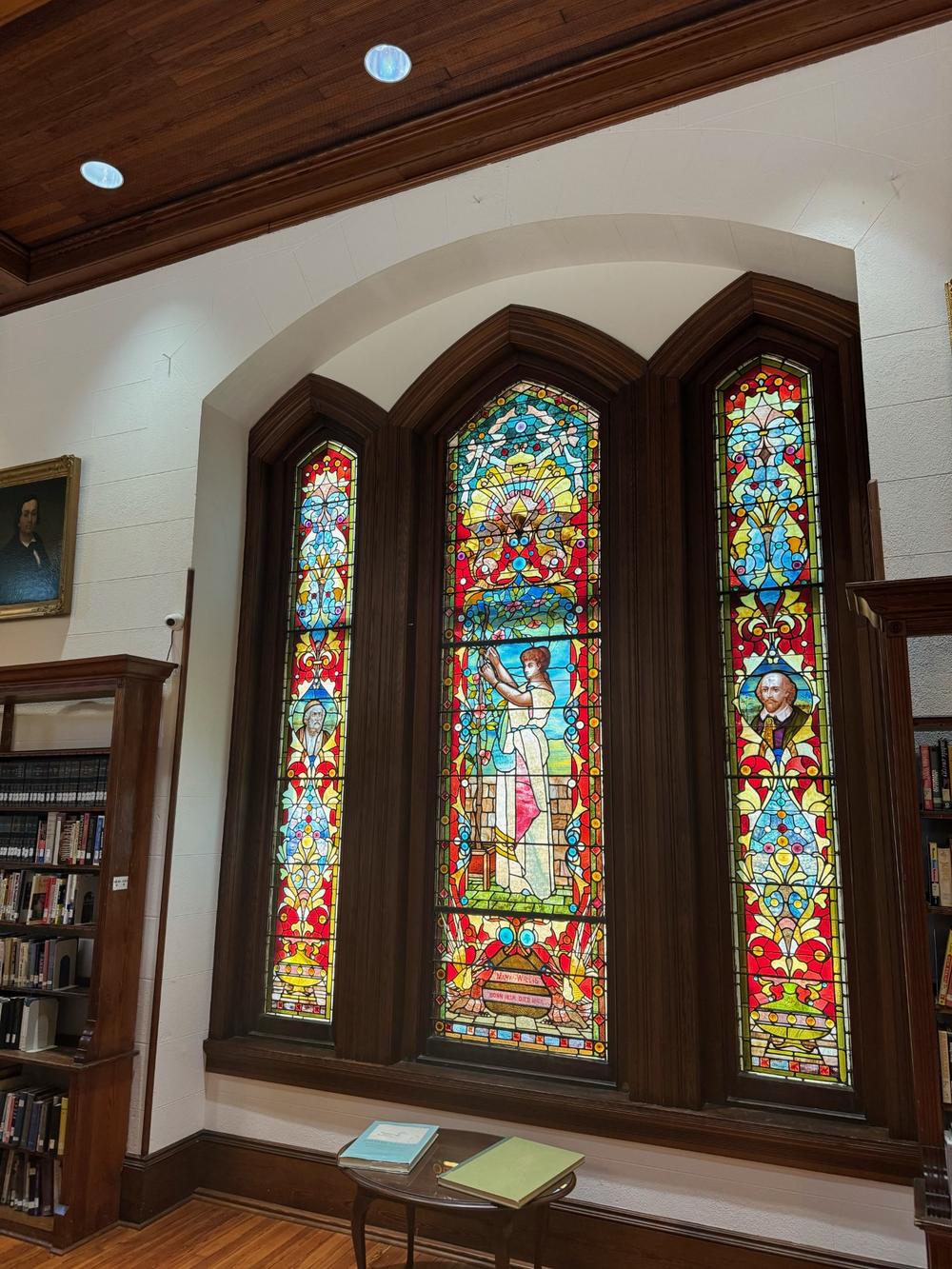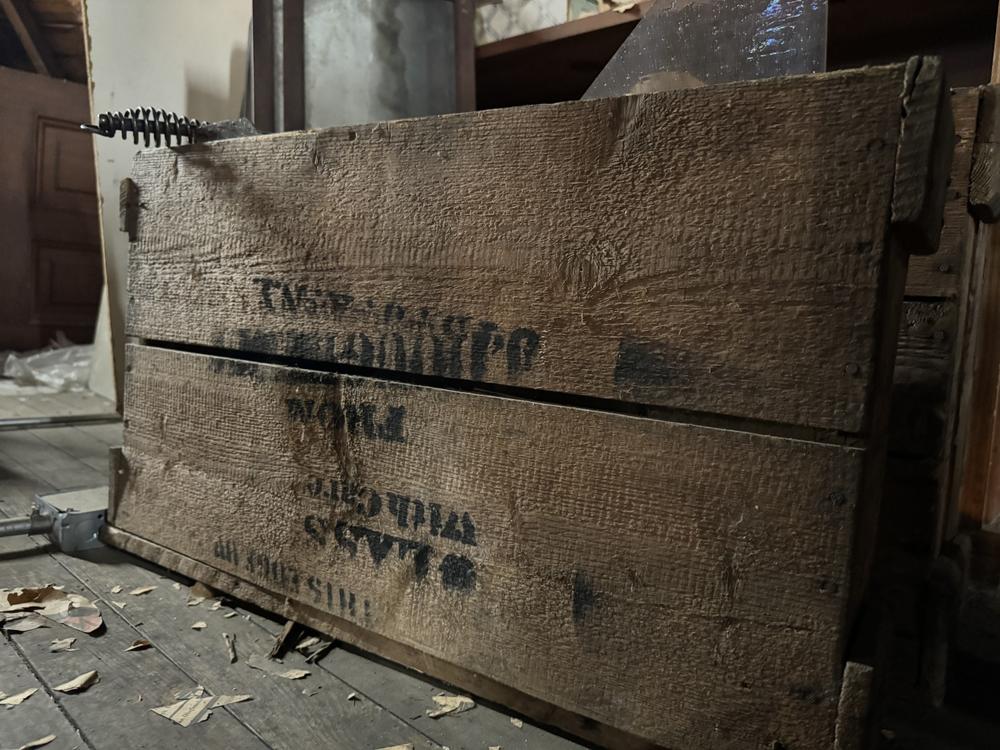![Dr. Frances T. Willis had "a desire to commemorate the life [of] his late daughter; and to give back to the Washington commu](https://www.gpb.org/sites/default/files/styles/flexheight/public/2024-05/hullinger_washington_stained_glass_bxw_thumbnail_image2.jpeg?itok=6umr6Oxh)
Caption
Dr. Frances T. Willis had "a desire to commemorate the life [of] his late daughter; and to give back to the Washington community.”
Thursday morning I'm driving to Washington, Georgia, from my Atlanta home intown.
WAZE is showing 115 miles - about two hours of travel along Interstate 20 East, through some construction, over to State Road 22, Exit 148, and lots of two-lane highway.
Wilkes County is a mind-boggling place, loaded with American history. It was the site of one of the most important battles of the American Revolutionary War to be fought in Georgia; the Battle of Kettle Creek in 1779, where the British were defeated.
In 1793, Eli Whitney perfected the Cotton Gin nearby. And it was here that Jefferson Davis and his cabinet dissolved the Confederate States of America.
I have an 11 a.m. interview inside an American architectural gem: The 136-year-old Mary T. Willis Library.
![Dr. Frances T. Willis had "a desire to commemorate the life [of] his late daughter; and to give back to the Washington commu](https://www.gpb.org/sites/default/files/styles/flexheight/public/2024-05/hullinger_washington_stained_glass_bxw_thumbnail_image2.jpeg?itok=6umr6Oxh)
Dr. Frances T. Willis had "a desire to commemorate the life [of] his late daughter; and to give back to the Washington community.”
Parking at the Town Square, I walked a couple of blocks to the library. Washington is covered in commemorative plaques everywhere you look.
Georgia’s first county - established by European settlers - has a museum vibe, defining this unique community.
The Mary T. Willis Library building is extraordinary. Queen Anne in style, its optic calling card: A Tiffany & Co. stained glass depiction of Mary Willis, flanked by William Shakespeare and Homer.
A visual odyssey.
In 1888, Coca Cola was getting started in downtown Atlanta, and the electric streetcar had just arrived. Meanwhile, Washington, Georgia was ushering in a landmark building with exorbitant glass from a New York City artisan.
In the midst of grinding, post-Civil War poverty in rural Georgia, how did that artistic commission occur?
“Washington was a wealthy place in the 1880’s," answers Skeet Willingham, a local expert who knows all in this fascinating hamlet. "Among the residents of influence and connection, Dr. Francis T. Willis.
"Dr. Willis had a medical degree from Pennsylvania. He moved well in New York City society. It is there [that] he met Louis Comfort Tiffany, with a desire to commemorate the life [of] his late daughter; and to give back to the Washington community.”
Stained glass for a 19th-century library was a rare occurrence west of the Hudson River.

The Mary T. Willis Library is extraordinary. Its optic calling card: A Tiffany & Co. stained glass depiction of Mary Willis, flanked by William Shakespeare and Homer.
So how did Tiffany & Co. transport the glass from its New York City headquarters to the South?
“The finished stained glass was loaded in protective wooden boxes, placed on a train bound for Augusta, transferred to a (train) Barnett spur line, unloaded to a horse wagon, chartered for Washington, then assembled on site by Tiffany [craftspersons],” Willingham said.
"I’m looking at this amazing Tiffany & Co. stained glass," I posed to Mary T. Willis Library Director, Katherine Gregory, "what ever became of the legendary wooden boxes?”
Gregory, laughing, replies: “Would you like to see them? They are here. Follow us to the attic for a trip backwards, 136 years.”

How did Tiffany & Co. transport the glass from its New York City headquarters to the South?
Using an ancient key, opening an old wooden door, revealing secret steps, we ascend a creaky set of staircases cloaked in spider webs The air is warm and musty. We walk past stacks of 115-year-old National Geographic magazines, and a 160-year-old hardback detailing the science of growing Georgia cotton.
Up ahead, in the distance, we spot the Tiffany & Co. wooden boxes, near the century-old children’s reading table.
There in the attic corner, as they have been since 1888, are the wooden boxes of Washington, Georgia that safely transported the Tiffany & Co. stained glass South.
It’s been 136 years since the New York City trip, and those boxes and stained glass are just as relevant as ever.
Time to fire off the Billy Joe Shaver classic, “Fast Train To Georgia.”
“I been to Georgia on a fast train honey/I wouldn't born no yesterday.”
More on Georgia’s oldest public library in the days ahead...
